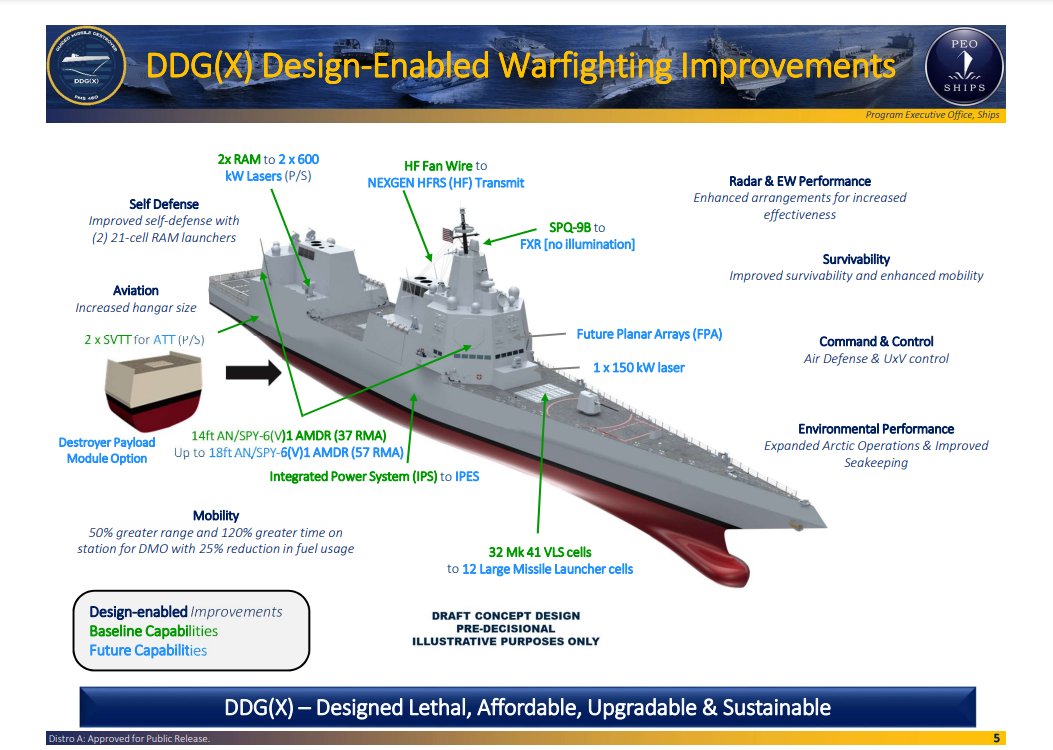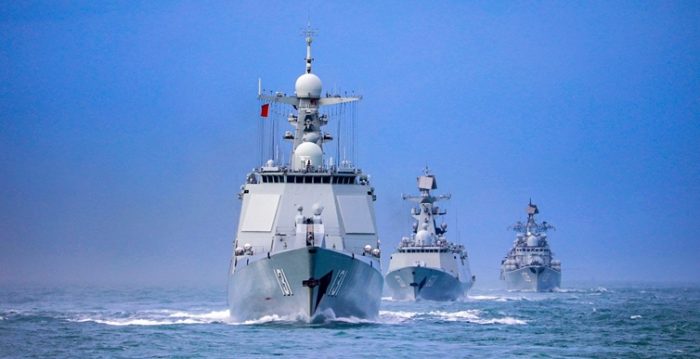1st Time Since Cold War – China’s Stupendous Rise As A Naval Power Alarms That West, Threatens US Dominance — New Report
BySakshi Tiwari
February 2, 2022
A US report claims that China’s PLA Navy (PLAN) has been steadily modernizing since the mid-1990s, and has now become “a powerful military force” in the coastal waters.
It is a revised version of the US Congressional Research Service’s annual report, ‘China’s Navy Modernization: Implications for U.S. Naval Capabilities’ according to USNI. The original report, which was tabled in October last year, was revised on January 22.
The revised report apparently admits that the Chinese navy has the most ships in the world, and its ongoing improvement of capabilities poses a threat to the US Navy’s control of the Western Pacific. The report recommends that the US Congress assess whether the Navy is effectively prepared to deal with a modernized PLAN.
The report tacitly calls for efforts to prepare for the challenge that this modernization poses, especially in the Western Pacific which has traditionally been an American bastion.
It categorically states that the Chinese navy is expanding its operations in more distant regions, with vessels entering waters near the Western Pacific, Indian Ocean, and Europe.
This assertion points to the fact that even though the US policymakers and military have made concerted efforts to counter China’s growing dominance in the seas far away from its territorial waters, it has achieved little success. India remains on the fringes while China has steadily moved to Europe and the Middle East with its Belt and Road Initiative.
The report further states that at a time when the United States Navy is achieving and maintaining dominance in the Western Pacific, the Chinese Navy’s advance is increasingly viewed as a challenge to that ability.
According to the study, this is the first time the US Navy has faced a situation since the Cold War. The Chinese navy is the most important aspect of China’s long-term goal to challenge American supremacy.
US Navy Vs PLAN
According to the research, the Chinese navy is the largest in East Asia. In terms of combat ship numbers, the Chinese navy overtook the US fleet a few years ago.It is noteworthy that the United States has at least two major allies in the region, Japan and South Korea. It also has considerable influence among the ASEAN states that are in direct conflict with China in the South China Sea.
The US Department of Defense noted in the study, “The People’s Liberation Army Navy has roughly 355 vessels, including major maritime warships, submarines, aircraft carriers, amphibious ships, minesweepers, and other auxiliary ships. This figure excludes 85 patrol boats and combat platforms armed with anti-ship missiles.”
Some US analysts are concerned about the Chinese navy’s shipbuilding capabilities. According to the Pentagon, the number of ships with the PLA Navy is estimated to reach 420 by 2025 and 460 by 2030.
China is also set to soon launch its third indigenously developed aircraft carrier, which will bolster its capabilities in the sea with the advanced catapult-launch system. A fourth aircraft carrier, which is set to have nuclear capabilities, is also in the pipeline, according to SCMP.
China’s naval modernization plans encompass a wide range of procurement programs for warships, aircraft, and weaponry, as well as improvements in maintenance and logistics, rules, personnel quality, education and training, and exercises.
According to the research, while the Chinese navy currently has some limitations and vulnerabilities, they are working hard to overcome them.
New ships have been launched at an alarming rate. Between 2014 and 2018, China launched more submarines, warships, amphibious vessels, and auxiliaries than the combined navy of Germany, India, Spain, and the United Kingdom.
China commissioned eighteen ships in 2016 alone, with at least another 14 added in 2017. In comparison, the United States Navy commissioned five ships in 2016 and eight ships in 2017, according to a previous report of China Power.
Beijing has made significant efforts to modernize its navy. At the 18th Party Congress in 2012, then-President Hu Jintao urged China to become a “maritime power” capable of protecting its territorial rights and interests.
Current President Xi Jinping declared in April 2018 that “the mission of creating a great navy has never been more vital than it is today”. China’s 2019 defense white paper emphasized the need to “create a robust and modernized naval force” capable of carrying out “far-reaching operations”.
China Aims To Shift The Status Quo?
According to the report, it is believed that China’s military modernization efforts, including naval modernization, are aimed at acquiring the capability to resolve the Taiwan issue.The communist country sees the self-governing island as a breakaway province and is hell-bent on reuniting it with the mainland. Beijing believes that within 200 nautical miles of the South China Sea, it can resolve the Taiwan issue militarily.
China claims 200 nautical miles (nm) from the end of the territorial sea as its exclusive economic zone (EEZ), within which it claims the right to govern military operations.
The United Nations maintains that freedom of navigation of armed vessels is a globally established and accepted norm inherent in international law — in other words, states do not have the power to limit navigation or exercise any control in EEZs for security reasons.
For this very reason, US seventh fleet often carries out Freedom of Navigation Operations (FONOP) in the disputed region. Recently, the Chinese navy chased away an American warship.
China’s obsession with Taiwan can be gauged from the fact that PLA aircraft continue to violate the latter’s airspace even as Beijing harps on the island’s reunification. It has also been intruding into the Japanese air space as Tokyo has hinted at supporting Taiwan in the event of a Chinese invasion.
Furthermore, the goals of China’s military modernization include sustaining China’s sea lines of communication, particularly the sea route from China to the Persian Gulf, replacing US influence in the Western Pacific, and cementing China’s standing as a regional force and a significant international power, according to the report.
To achieve these objectives, China wants its navy to be a part of its efforts to acquire regional anti-access/area denial (A2/AD) capabilities, which are intended to prevent US participation in Chinese waters, including US involvement in Taiwan and other conflicts.
Even if these aims cannot be met, the US military intervention should be postponed or the efficacy of the US military action decreased, the report said.
The report also referred to two anti-ship ballistic missiles developed by China that can hit ships at sea — the DF-21D and DF-26 — while outlining China’s anti-access capabilities. The DF-21D is a road-mobile ballistic missile with a range of more than 1,500 kilometers.
On the other hand, the DF-26 is a multi-purpose, road-mobile medium-range missile with a range of up to 4,000 kilometers. According to the Pentagon, the missile “can carry conventional and nuclear bombs for pinpoint strikes on land and marine targets.”

DF-26 missile (via Twitter)
Both of these missiles are known as carrier killers and have the capability to cause severe damage to an adversary’s fleet in case of a conflict. In fact, the DF-26 can seriously threaten American assets at Guam.
While the research report mentions the threat posed by the PLAN’s size and modernization, it also gives an account of the steps that the US Navy is taking to counter-balance China’s growing naval power.
US Navy To Fight Back
The Congressional Research Service report notes a number of measures to modernize the US Fleet in reaction to the Chinese navy, such as boosting naval operations in the Pacific.The US Navy has deployed its most powerful new ships, aircraft, and best-in-class troops in the Pacific, maintaining or expanding deployment and training activities in the region. Furthermore, the US Navy has enhanced cooperation with its allies in the Indo-Pacific area, including cooperation with other navies.

DDG(X) Warship (via Twitter)
It will be designed to “drive a new generation of directed energy weapons and high-power sensors that will follow the navy’s current fleet of Arleigh Burke-class guided-missile destroyers”, according to the report.
The US Navy stated that in the future, it will focus more on distributed ship deployment and will deploy a big number of unmanned ships and aircraft.
The report has thus indicated that the stage is set for a more vigorous competition at the sea, especially in the Western Pacific.

1st Time Since Cold War – China’s Stupendous Rise As A Naval Power Alarms That West, Threatens US Dominance — New Report
A US report claims that China’s PLA Navy (PLAN) has been steadily modernizing since the mid-1990s, and has now become “a powerful military force” in the coastal waters. India’s Next Naval Fighter: Closely Contested By F-18 Super Hornet, Rafale-M Could Finally Strike A Chord With The Navy It is a...
 eurasiantimes.com
eurasiantimes.com

